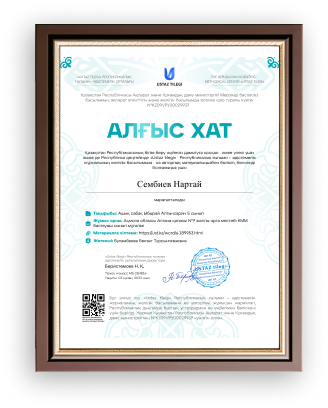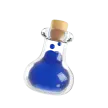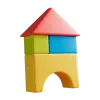|
LESSON: Module
1 Lesson 1
|
The
Theme: Animal
types
|
|
Date:
|
Teacher's
name:
|
|
CLASS:
|
|
Learning objective(s)
that
this lesson is contributing
to
|
To talk about animal types; to talk about elephants, snakes
and penguins.
|
|
Lesson
objectives
|
All learners will be able
to:
3.S1 make basic statements related to personal information,
people and objects on familiar topics and classroom
routines
3.L5 identify missing phonemes in incomplete
words
3.UE14 use basic prepositions of location and
position: at, behind, between, in, in front
of,
near, next
to,
on, to to describe where people and things are use prepositions of
time: on, in, at to talk about days and times (the usage of prepositions is
given in Module 4 “Our Town” )
3.UE9 use common present simple forms [positive, negative,
question] and contractions to talk about what you want and like and
habits and facts
3.UE5 use interrogative pronouns
including which, what, where, whose to ask who people are and what they are doing
(pronouns which, where, whose are practiced in Module 6)
|
|
Assessment
criteria
|
Learners have met the learning objectives if they can talk
about animal types: about
elephants, snakes
and penguins.
|
|
Language
focus
|
Structures: Interrogative pronouns (what, which); Present
Simple
Language in use: I live on land. I eat eggs and small animals. I look for
food at night.
What am I? I’m a snake. Do snakes live in Antarctica? Yes,
they do./No, they don’t.
|
|
Target
vocabulary
|
mammal: elephant reptile: snake bird: penguin
|
|
Cross -
curricular
links
|
Science (Exs 1 and
4)
|
|
ICT
skills
|
Using videos& pictures, working with URLs
(Internet)
|
|
Previous
learning
|
‘Animal’
vocabulary
|
|
Part of the
lesson/Time
|
Teacher’s activity
|
Student’s activity
|
Assessment
|
Resources
|
|
BEGINNING THE
LESSON
8
min.
|
(An activity to introduce yourself and greet the
pupils.)
Wait by the door and greet the pupils as they
arrive.
When everyone is seated, write your name on the board and
introduce yourself to the class. Point to your name on the board
and to yourself and say:
|
Hello, I’m (Mrs Sharipova).
Say: Hello again. The pupils repeat, chorally and/or
individually. Stand in front of a pupil, introduce yourself and
elicit his/her name.
Repeat with some more
pupils.
e.g. Teacher: Hello, I’m Mrs Sharipova. Pupil 1: Hello,
I’m Assel. etc
Have the pupils go around the classroom, shake hands and
introduce themselves.
e.g. Pupil 1: Hello, I’m
(Berik).
Pupil 2: Hello,
I’m (Ulan). etc
|
|
Interactive Whiteboard
Software
|
|
PRESENTATION
AND PRACTICE
30
min.
|
Look at the pictures. Which animal is a mammal? a
reptile?
a bird?
Write mammal, reptile, bird on board. Explain their
meaning
(mammals feed their babies milk from their own
bodies,
reptiles lay eggs and use the heat from the sun to keep
their
blood warm, birds have feathers and wings and in most
cases
can ly). Ask the pupils, in L1 if necessary, to name
some
mammals, e.g. dog, elephant. Write them on the board
under
the correct heading. Repeat the activity for reptiles and
birds.
Refer the pupils to the picture on the previous page and
elicit
the animals. Point to the penguin and ask: What type of
animal
is the penguin? Elicit: A bird. Then point to the elephant
and
ask: What type of animal is the elephant? Elicit: A
mammal.
Repeat the activity for the
snake.
|
Answer key
mammal: elephant
reptile: snake
bird: penguin
|
T praise active Ss with phrases such as: “Good
job!
Well done!” “One more time,
please”
|
Whiteboard
Pupils Book
Poster
|
|
|
Read and name the
animal.
Read the instructions and explain the activity. Allow the
pupils
some time to read the sentences and write the names of
the
animals. Check
their answers.
|
Answer
key
1 snake 2 elephant
3 penguin
|
T praise active Ss with phrases such as: “Good
job!
Well done!” “One more time,
please”
|
Whiteboard
Pupils Book
Poster
|
|
|
True or False? In pairs, decide. Check your answers
online
or with your
teacher.
Read the instructions and explain the activity. Go through
the
sentences and elicit any unknown
words.
Allow the pupils some time to read the sentences about
snakes
and choose True or False. Once the pupils have
finished,
provide them with the correct answers or have them go
online
to find the
answers.
|
Answer key
1 B 2 A 3 A 4 B 5 B
Chose a pupil and ask: Do snakes live in
Antarctica?
Elicit: No, they don’t. Then, in pairs, the pupils ask and
answer
questions as in the
example.
Answer key
2 A: Do snakes smell with their
tongue?
B: Yes, they do.
3 A: Do snakes sleep with their eyes
open?
B: Yes, they do.
4 A: Do snakes eat only three times a
year?
B: No, they don’t.
5 A: Do snakes stop growing when they are
one
year old?
B: No, they don’t.
|
T praise active Ss with phrases such as: “Good
job!
Well done!” “One more time,
please”
|
Whiteboard
Pupils Book
Poster
|
|
|
Find some facts about one of the other two animals.
Present them to the class.
|
Ask the pupils to use the Internet or other sources and
find some facts about the elephant or the penguin. They can include
a picture or a drawing. Tell them to use the sentences in Ex. 3 as
a model. Allow them time to finish their assignment. Alternatively,
assign it for homework.
Have them present their assignments to the class during
this lesson or the next. Display their work in the
classroom. Note: Once you have corrected their
assignments,
guide your pupils on how to file them in their Language
Portfolios.
|
T praise active Ss with phrases such as: “Good
job!
Well done!” “One more time,
please”
|
Whiteboard
Pupils Book
Poster
|
|
ENDING THE
LESSON
7
min.
|
(An activity to consolidate the language of the lesson.)
Divide the class into two teams, A and B. Invite a pupil from each
team to the board. Whisper an
animal from the lesson to the pupils. The pupils then have
to draw clues on the board related to
the
animal. They are not allowed to speak, write words or use
gestures. Each team has two minutes to guess the correct animal.
The first team to do so, wins a point for his/her team. Continue
with other pupils from each team. The team with the most points
wins the game.
|
ACTIVITY BOOK
(Optional)
If you wish, you can assign some or all of the
corresponding activities from the Activity Book
for
homework. If this is the case, make sure you explain them
first in class.
|
T praise active Ss with phrases such as: “Good
job!
Well done!” “One more time,
please”
|
Whiteboard
Pupils Book
Poster
|


















